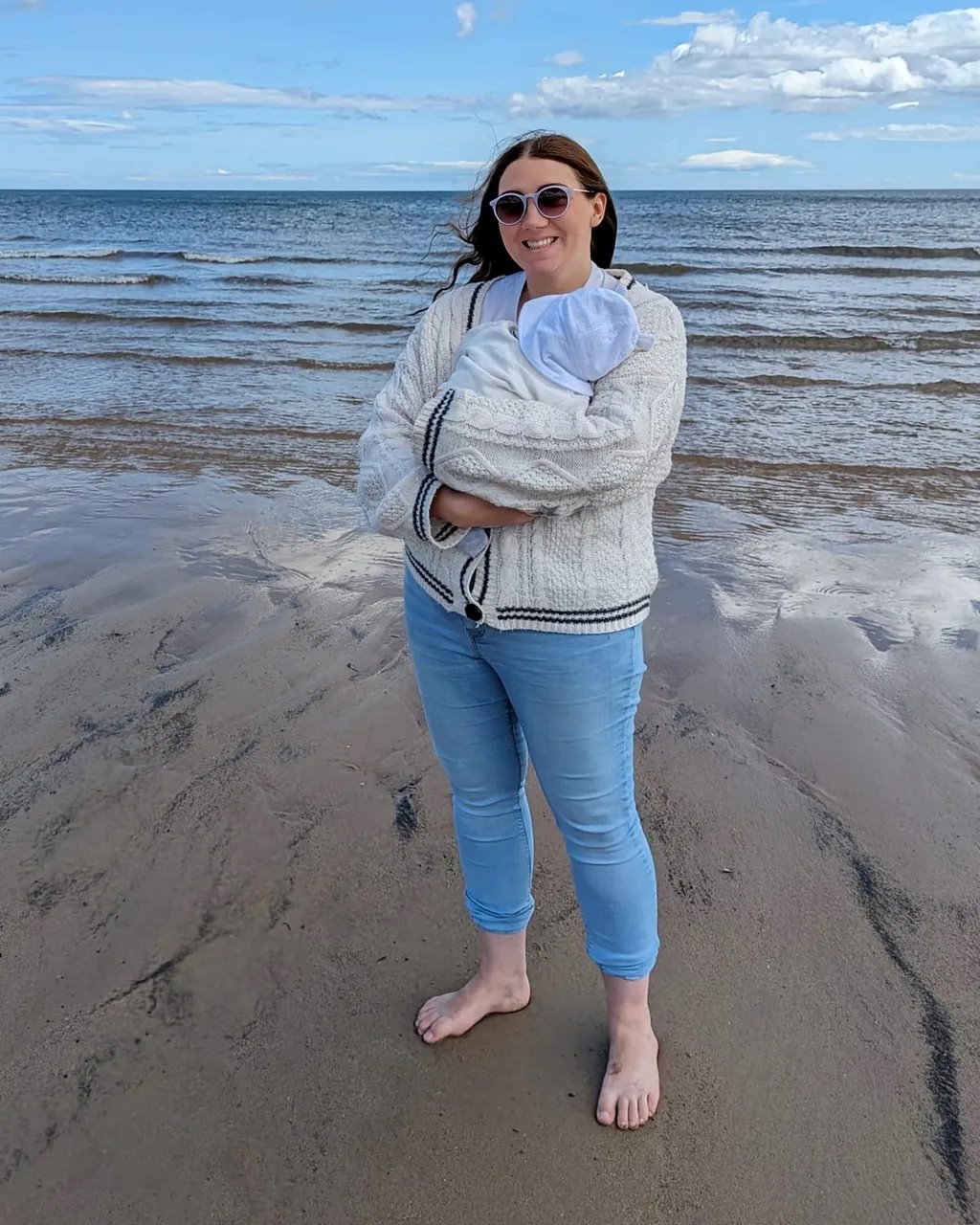Wearing your favorite clothes all the time has more benefits than you might think. It's like a "wearable hug," and it's better for the planet, writes Matilda Velin.
We all have certain items of clothing that we feel most comfortable in and that we end up wearing every day, even though we have 10 other items of clothing that would serve the same purpose in our closet.
One pair of jeans that fits better than all the others, or one shirt that is just "us", our best and most prominent identity in tailoring form.
And while fashion weeks in New York, London, Paris and Milan aim to create shopping momentum for the new must-have styles of autumn 2024, many of us are snuggled up on the sofa or going for a walk in the park wearing the same sweater we've been carrying for years. the back of the bedroom chair every day.
But why is that so? And how do lazy dressing habits make us supporters of sustainability?
- How to make your wardrobe sustainable
- How much does fashion affect environmental pollution?
- No more "I wear it a couple of times, then throw it away": the EU is hitting fast fashion
- Our closets are full of unworn clothes
Ruth Barrett and her partner Jordan got married a week before the pandemic shut down Britain.
While the couple was planning a last-minute wedding, they missed their honeymoon.
In the larger context, a lost trip isn't a big deal at all, Berett says, but when she and Jordan were able to drive around the area celebrating their mini-honeymoon a few months later, it was extra special.
"Obviously there were a lot of other things that were much more important," Berrett tells BBC Culture.
"It was so upsetting at the time, but we got that little nugget of beauty."

The Berets visited the Northumberland beaches near their home in Newcastle.
They were looking for beautiful places in nature. They saw dolphins.
They had the same album playing all the time in the car: Folklore singer Taylor Swift.
Later, when Swift released a collection of sweaters from the album's music video, Beret bought one.
"I had to order it from America," she says.
"I've been waiting for him for a long time. I'm usually very thrifty, but I thought that was one thing I really wanted."
The sweater is hand knitted, cream white color with black details.
"I describe it as Hamptons," says Barrett.
“A bit fancy.” It has stars on the elbows and a label that says Folklore - something not all versions have.
The sweater makes the beret feel calm, composed and comfortable.
When she was pregnant two years after the wedding, she wore it every day.
She wore it when she went to the hospital to give birth, and she wore it when she left the hospital with her son.
When her son was three weeks old, her grandmother died unexpectedly. She was wearing a sweater again.
It turned the memory of her mini-moon into something tangible, she says, something physical to comfort her in difficult times: "I feel it almost like a hug that can be worn."
- A "textile" made from recycled plastic bags helps fight pollution
- How plastic affects human health
- Reasons why you should wash your clothes as rarely as possible
- How bags have become as harmful as plastic bags - or worse
Emotional endurance
Why do certain pieces of clothing mean so much to us?
Well, first of all, they have to last - and that doesn't depend on money.
This summer, new research from the University of Leeds found that there is no link between the retail price of a garment and its physical durability.
"What we wanted to challenge is the underlying myth that cheaper clothes will be of poor quality and won't last as long and therefore we should be telling consumers to spend more money online," Mark Sumner, a lecturer at the School of Fashion, told BBC Culture. in Leeds.
"But what we find here is that the evidence just doesn't add up."
But physical quality is not the only thing that matters.
Equally important is a related factor: emotional endurance.
This is the connection we build with clothes, explains Kate Morris, a PhD student working with Sumner: We don't fall in love with certain items of clothing just because of how they look—but also because of how they make us feel.
"People keep clothes and they become favorites because they wore them to a certain event," says Sumner.
"They went to festivals in it or on vacation, or maybe they met true love."
This fusion of emotions and clothing also works in another way.
Sumner's team talks about a woman from his team's research who went through a difficult divorce.
When the paperwork was finally done, she took all the clothes she associated with her husband, put them in garbage bags and threw them away.
Then she rebuilt her wardrobe again.
Feedback is also important.
"What you think you look good in is not your individual decision," says Sumner.
"If you hear from other people that you look really good in a dress, that piece of clothing boosts your self-esteem. It's happened on numerous occasions when you buy something, put it on, and someone says, 'Oh, that looks a little funny.' Finally, put it in the back of the wardrobe."
In 2018, Anna-Maria Bauer, an Austrian journalist living in Southampton, went on holiday to New Zealand.
It was her first trip to faraway destinations, and after saying goodbye to the friend she was traveling with, Bauer spent the last few days alone in a rented apartment on airbnb in the suburbs of Auckland, a little nervous about the upcoming summer.
When the lady who led airbnb recommended a high street nearby, Bauer left to clear her mind.
Soon she came across a small boutique.
"As soon as I walked in, I felt at home," she tells BBC Culture.
"The owner was friendly but not pushy."
Bauer recommended a pair of wide-leg turquoise pants, which were very different from her usual skinny jeans.
"The price was 42 euros and I thought, do I really need them?", she remembers.
"Then another customer in the boutique told me they fit me well. I was overcome with emotion."
Today, Bauer turquoise pants are an absolute favorite.
They fit perfectly both in cold and warm weather, with ballet flats and high heels.
The thick fabric means they're sturdy enough for long days in London and comfortable enough for lounging on the sofa.
"With jeans, a t-shirt has to do the job, but with this I can throw on any simple t-shirt and have an outfit ready," says Bauer.
"In some clothes, I know I look nice, but I pull in my stomach." But these pants make me feel good even when I'm bent over."
Pants are in constant use.
"I wash them and wear them again," says Bauer.
"They're on me, on the chair or in the washing line. Never in the dressing room."
And the memory of their purchase is still vivid.
"I felt safe in the boutique," says Bauer.
"The feeling of security remains with me, the one that grounded me before the flight."
Research by the environmental group VRAP estimates that a quarter of the clothes in British wardrobes have not been worn for a year and that these forgotten items of clothing have a total value of 1,8 billion euros.
It's about clothes, say Sumner and Morris from the University of Leeds, from which "we've practically freed ourselves".
"They're moot from a sustainability standpoint because you don't use them," Sumner says.
"All the energy, water, chemicals and even labor that went into making them is wasted."
CLOTHING IN NUMBERS
- About 45 percent of people in the UK shop for clothes at least once a month;
- About one in eight buy clothes a week;
- About 25 percent of the clothes in our closets have not been worn for a year;
- The predicted length of time people kept clothes increased between 2013 and 2021;
- A pair of jeans is now kept for four years, compared to three in 2013.
Source: VRAP/BBC
While scientists say it's almost impossible to predict whether an item of clothing will become a favorite before you buy it, you can still improve the odds.
It is important to pay attention to both physical and emotional endurance.
For example, we can only form an emotional connection with a piece of clothing if it lasts long enough for us to come to love it.
"An emotional bond develops over time," says Sumner.
"You need some time with clothes and they have to remain functional."
Conversely, he says, denim gets softer and fits better the more you wash it. This is why we often become more and more attached to jeans as time goes on.
Equally, fast fashion trends can mean you get rid of things before you've given yourself enough time to start building a relationship with them.
In Newcastle, UK, Ruth Beret continues to wear a sweater.
After finding a supermarket brand that has similar products, she bought one for her son as well.
"I spilled coffee on mine recently, but I was able to clean it up," she says.
“It's getting shaky. But things like these are almost like a snapshot or a fingerprint. Somewhere I've been to make memories. If needed, I can always patch it up a bit. I can't imagine not wearing it."
You may also be interested in this story
Follow us on Facebook,Twitter i Viber. If you have a topic proposal for us, contact us at bbcnasrpskom@bbc.co.uk
Bonus video:




